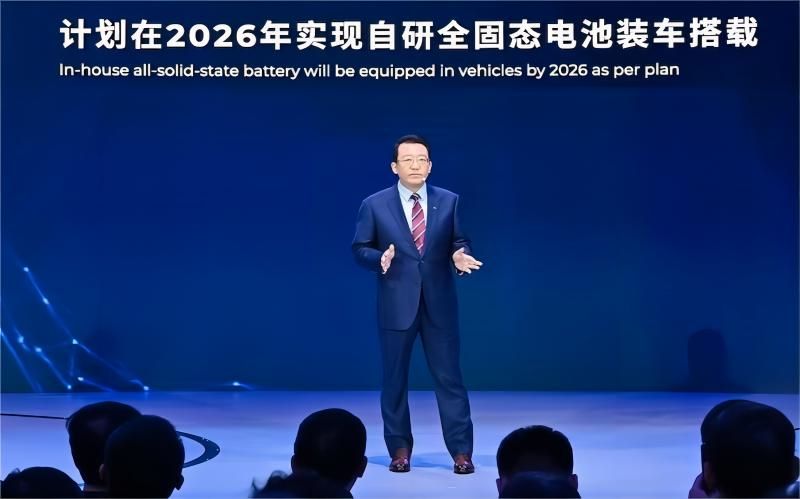Author:MarwenDate:2024-4-12

On the morning of April 12, 2024, the 2024 GAC Technology Day event and GAC Technology Innovation Conference were held at the GAC Research Institute. At the meeting, two major blockbuster technologies "all-solid-state battery" and "no picture pure vision" were released, as well as GAC technology's self-reliance and self-reliance action plan. What GAC AION released this time is the industry's first all-solid-state battery, which has three core advantages: ultra-high energy density, high safety and large-capacity all-solid-state batteries.
As we all know, traditional lithium-ion batteries include four major components: positive electrode, negative electrode, electrolyte, and separator. Solid-state batteries replace the electrolyte with a solid electrolyte. Compared with traditional lithium-ion batteries, the key difference between solid-state batteries is that the electrolyte changes from liquid to solid, taking into account safety, high energy density and other properties. GAC AION has made breakthroughs in key technologies and successfully trial-produced high-safety and large-capacity all-solid-state batteries, which have three core advantages: ultra-high energy density, high safety and large-capacity all-solid-state batteries. This innovative technology is expected to be installed on GAC AION's Haopin models in 2026, aiming to solve consumers' concerns about battery safety and endurance.
GAC's all-solid-state battery uses high-area capacity cathode technology and third-generation sponge silicon anode technology (new nano-silicon composite anode), with an area capacity of up to 5mAh/cm², achieving a technological breakthrough of 400Wh/kg. Compared with the current most advanced liquid lithium-ion battery, its volumetric energy density has increased by more than 40%, and its mass energy density has increased by more than 30%, allowing the vehicle's cruising range to exceed 1,000km. Compared with the current mass-produced liquid lithium-ion batteries, the volume energy density is increased by more than 52%, the mass energy density is increased by more than 50%, and the vehicle battery life is increased by 50%.
In terms of safety, GAC uses a high-toughness dense flame-retardant composite electrolyte membrane to prevent the battery from exploding in the 200°C hot box test, setting a new record for the industry's highest heat-resistant level. In addition, the battery has maintained stable performance when tested under extreme conditions such as acupuncture, cutting, and low-temperature and high-heat environments, significantly improving the safety of the car.
In terms of battery cell capacity, GAC has successfully established a full-process manufacturing process for all-solid-state batteries by trying more than a hundred material solutions and process solutions, and has achieved the manufacturing of large-size multi-layer stacked all-solid-state batteries with a capacity of up to 30Ah. It exceeds the highest level in the industry (10-15Ah), laying the foundation for further research and development of automotive-grade all-solid-state batteries.
It is understood that GAC solid-state batteries are expected to be launched for commercial use as early as 2025, and the AION series models will gradually be equipped with them. Competition in the new energy vehicle industry is extremely fierce at present. Many traditional car companies are undergoing transformation to enrich their product capabilities. Whoever will achieve revolutionary breakthroughs in the battery field will mean that it will be at the forefront of new energy vehicles. All-solid-state batteries are recognized as the preferred solution for next-generation batteries and are also a key vantage point for next-generation battery technology competition. AION's self-research capabilities in the entire EV+ICV domain have taken the lead in opening up the second half of new energy and established its leading position in new energy technology innovation. GAC AION's innovative leading technology will bring great changes to the new energy industry and contribute to the development of China's new energy vehicles.

↓Next [ On April 9, NIO officially announced the completion of 2,400 power swap stations, and users have swapped power more than 41 million times. ]









